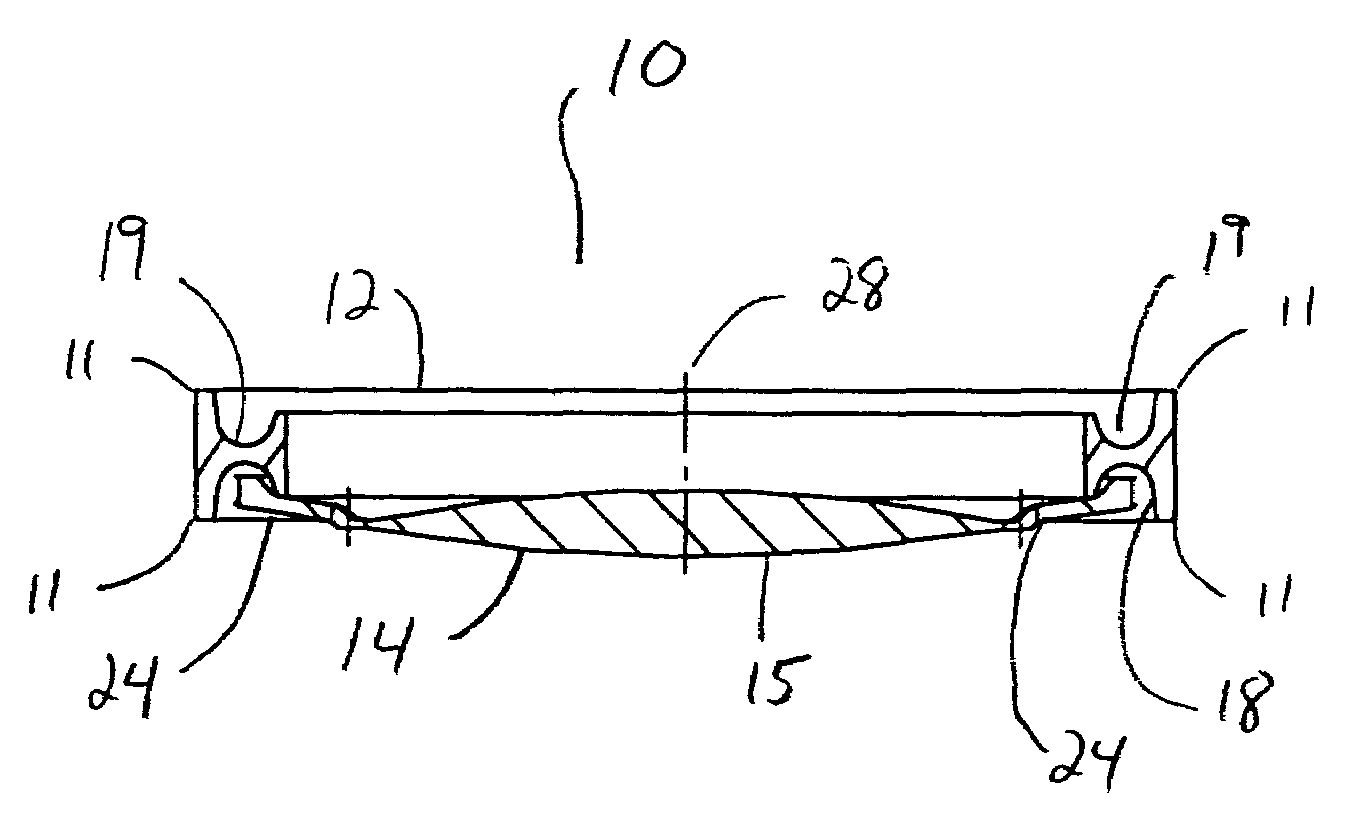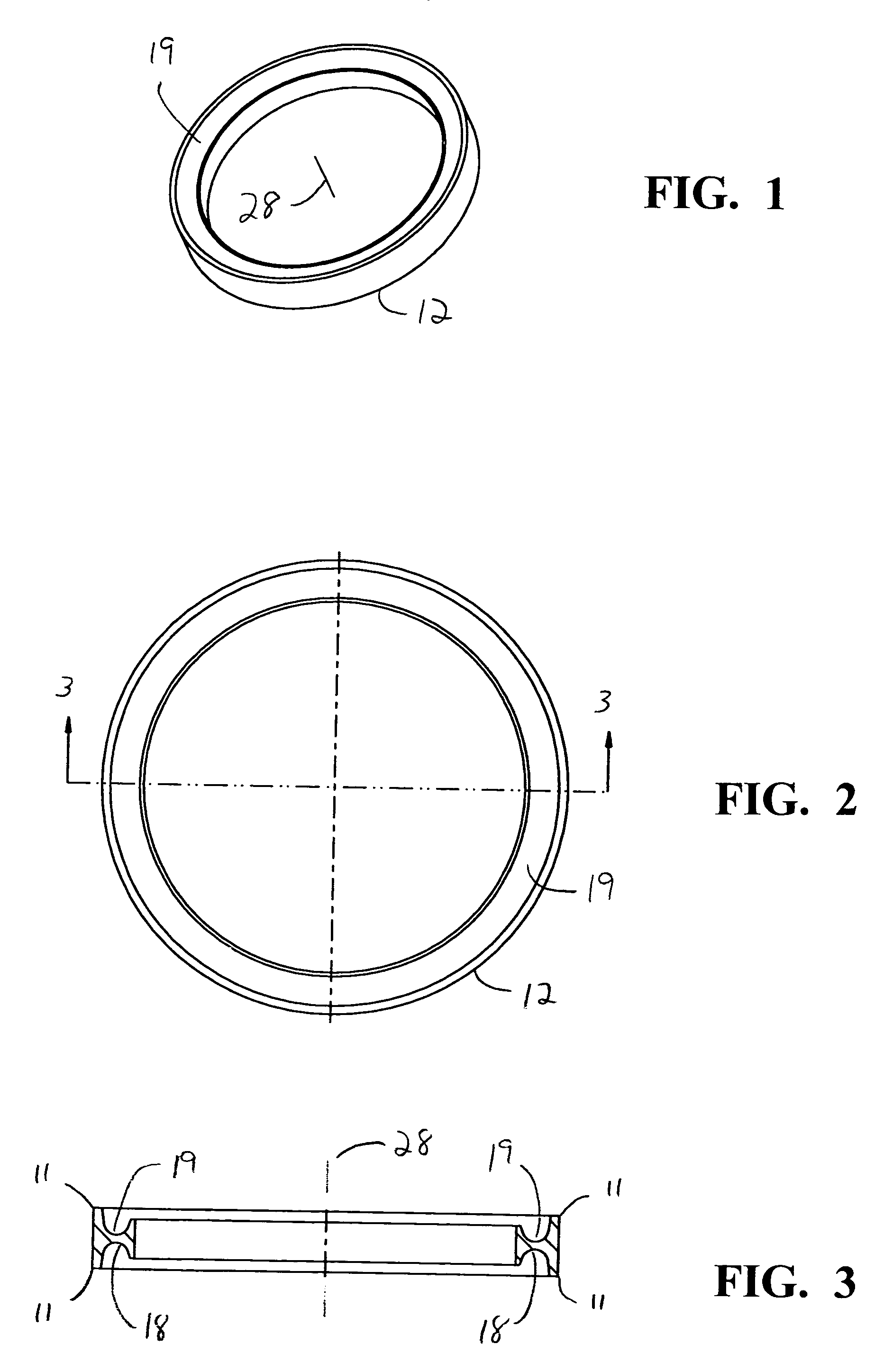Intraocular lens
a technology of intraocular lens and lens plate, which is applied in the field of intraocular lens, can solve the problems of non-optical components and inability to correct refractive errors, and achieve the effect of reducing or eliminating pco
- Summary
- Abstract
- Description
- Claims
- Application Information
AI Technical Summary
Benefits of technology
Problems solved by technology
Method used
Image
Examples
Embodiment Construction
[0026]As best seen in FIGS. 1, 4 and 7, lens system 10 of the present invention generally includes a first, or base, component 12, second, or optical, component 14 and may optionally includes third, or secondary optical component 16. First component 12 is generally ring-like, and, as best seen in FIG. 3, is generally “I”-shaped in cross section. This “I”-shape forms circumferential anterior channel 19 and posterior channel 18 within the inner diameter of component 12. Such a construction is easy to mold, and provides the flexibility necessary to allow component 12 to be inserted into an eye through a sub-2 millimeter incision. Component 12 is constructed with sharp, square outer edges 11 to help prevent PCO. Component 12 is preferably formed in any suitable overall diameter, for example, between approximately 8.0 millimeters and 12.0 millimeters, a suitable interior diameter, for example, between approximately 6.0 millimeters and 8.5 millimeters and made from a soft, foldable materi...
PUM
 Login to View More
Login to View More Abstract
Description
Claims
Application Information
 Login to View More
Login to View More - R&D
- Intellectual Property
- Life Sciences
- Materials
- Tech Scout
- Unparalleled Data Quality
- Higher Quality Content
- 60% Fewer Hallucinations
Browse by: Latest US Patents, China's latest patents, Technical Efficacy Thesaurus, Application Domain, Technology Topic, Popular Technical Reports.
© 2025 PatSnap. All rights reserved.Legal|Privacy policy|Modern Slavery Act Transparency Statement|Sitemap|About US| Contact US: help@patsnap.com



